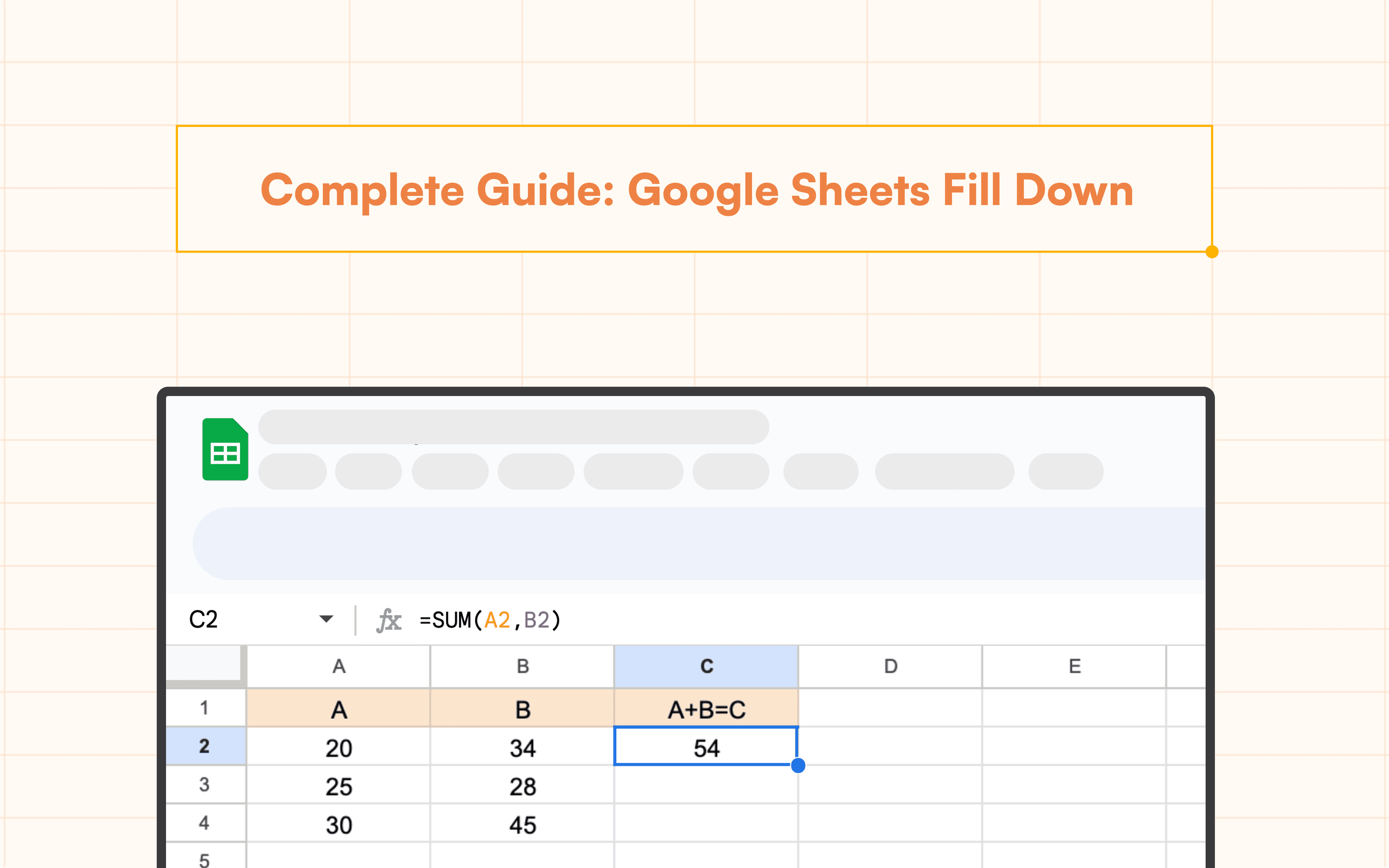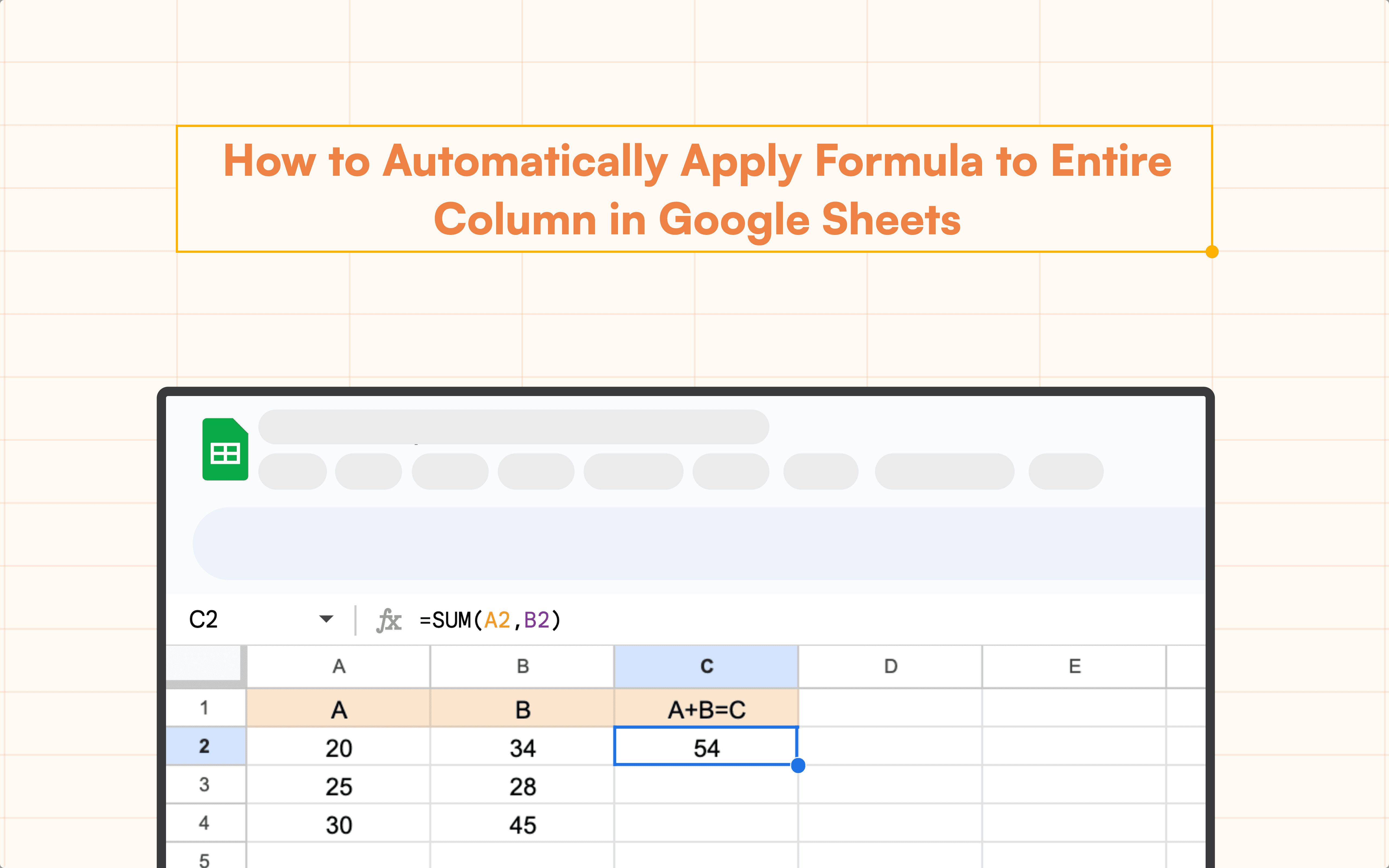
Introduction
Applying formulas to entire columns in Google Sheets can save you a massive amount of time and effort. Instead of manually entering calculations cell-by-cell, you can utilize simple techniques to populate an entire column with a formula quickly and efficiently. This ability is a huge timesaver, especially when working with large data sets.
Incorporating these techniques into your workflow becomes even more valuable when dealing with complex data sources like customer support data and the need to analyze metrics from data sources like Intercom to Google Sheets. In this case, automating formula application becomes even more crucial. Whether you’re tracking support ticket resolutions, customer interactions, or feedback, having formulas automatically applied across columns will streamline your data analysis and reporting.
Understanding Google Sheets Formulas
Before applying formulas to columns, it's helpful to understand the different types of formulas available in Google Sheets.
1. Math & Statistics
Basic arithmetic: SUM, AVERAGE, MIN, MAX
Advanced arithmetic: SUMPRODUCT, SUMIF, COUNTIF
Rounding: ROUND, ROUNDUP, INT, FLOOR
2. Text Formulas
Combining: CONCATENATE, JOIN
Extracting: LEFT, RIGHT, MID
Formatting: LOWER, UPPER, TRIM
3. Date and Time
Creating: DATE, TIME, NOW, TODAY
Components: YEAR, MONTH, HOUR
Calculations: DATEDIF, NETWORKDAYS
4. Lookups
Vertical: VLOOKUP, INDEX/MATCH
Horizontal: HLOOKUP
5. Logical Formulas
Conditional: IF, IFS, SWITCH
Operators: AND, OR, NOT
6. Arrays
Operations: ARRAYFORMULA, FILTER
Manipulation: SORT, UNIQUE
7. Finance
Loans: PMT, IPMT, PPMT
Investments: NPV, IRR
8. Information Formulas
Type checks: ISNUMBER, ISTEXT
Cell info: CELL
9. Engineering Formulas
Conversions: CONVERT, BIN2DEC
10. Databases
Calculations: DSUM, DCOUNT
11. Web Formulas
Import: IMPORTHTML, IMPORTDATA
By understanding these categories, you can better utilize the various functions available in Google Sheets to perform a wide range of tasks.
4 Different Methods to Apply Formula to Entire Column
Once you have your formula ready, there are several methods to copy it down an entire column. Let’s go from the easiest method to more complex methods to apply the formula
Using Drag and Drop
1. Enter the formula in the first cell of the column
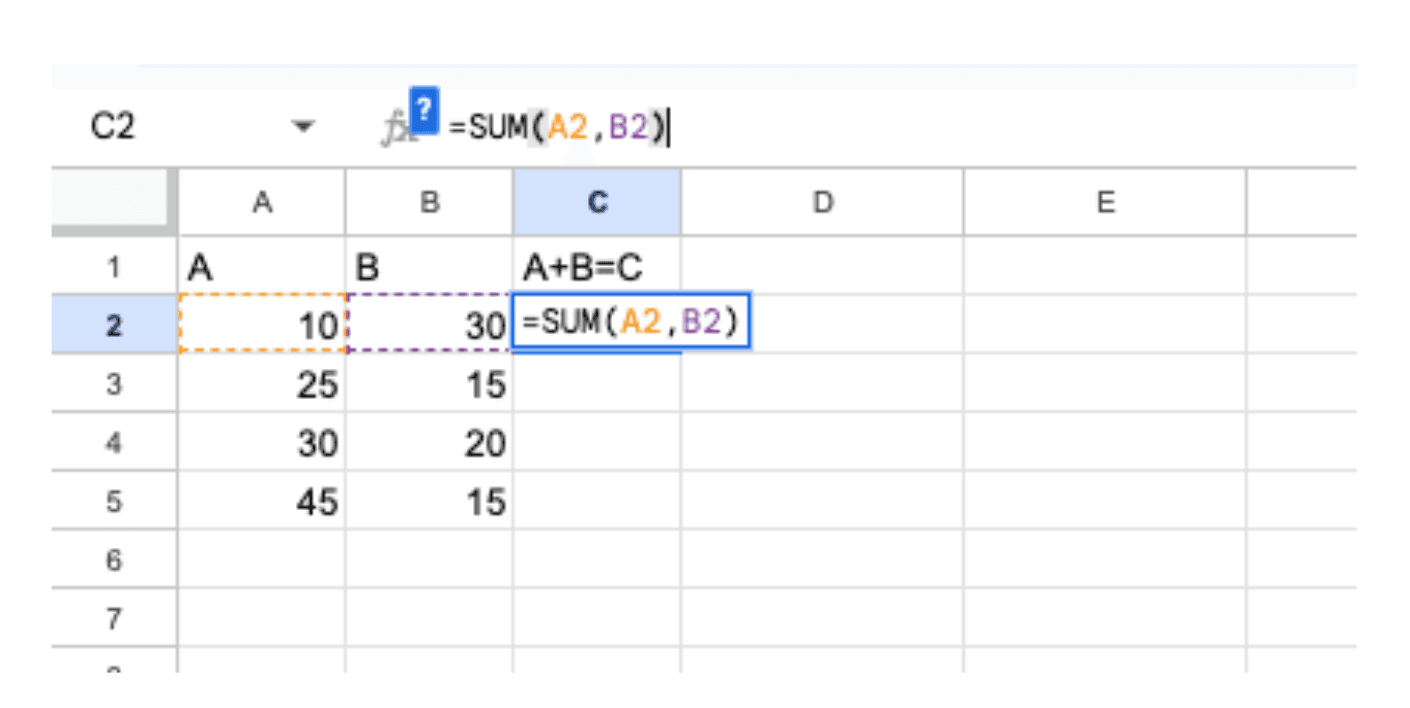
2. Hover over the bottom-right corner until the cursor becomes a thin cross
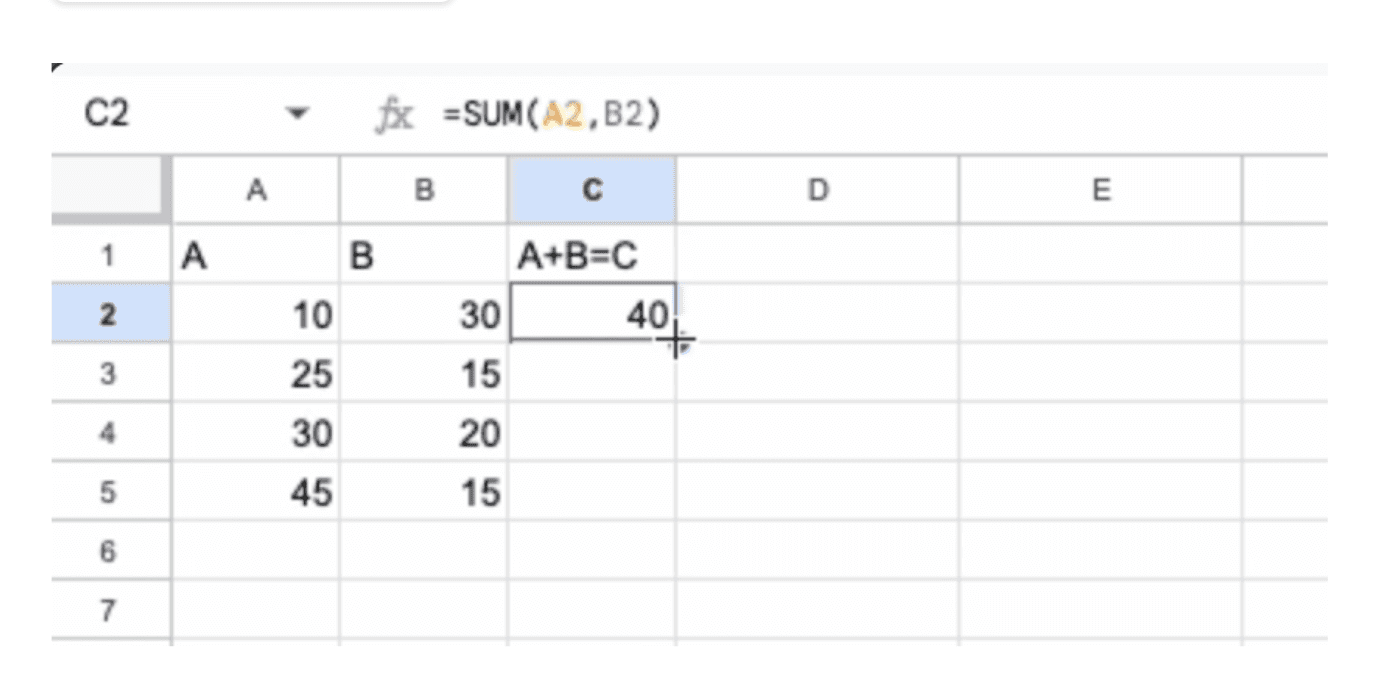
3. Click and drag the fill handle down to the last row you want the formula applied.
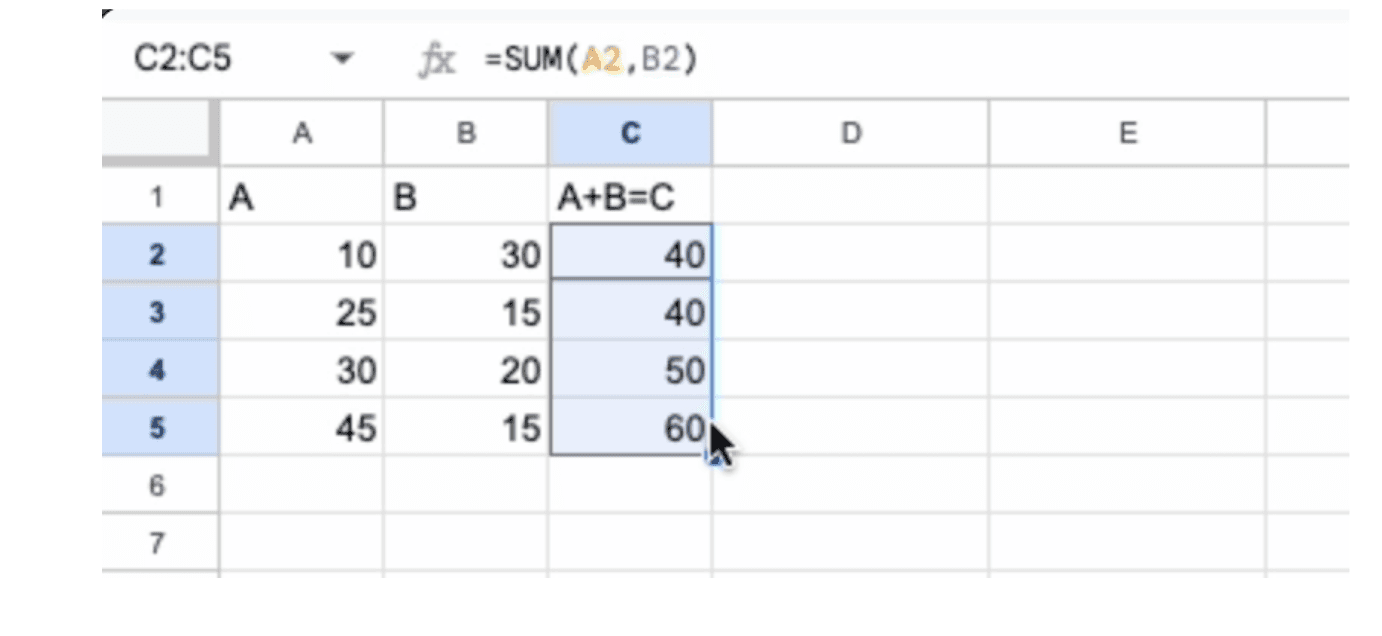
Accepting Suggested Autofill
As you start typing formulas, Google Sheets will suggest intelligent autofill options based on your data patterns.
1. Type the start of a formula, like =SUM()
2. Press Enter to accept the autofill suggestion
Autofill is great for quickly applying functions like SUM across a range it detects contains numbers. This method is quick but can be cumbersome with very large data sets spanning thousands of rows, as you may need to manually drag quite far.
Using Keyboard Shortcuts
For a blazing-fast method, use keyboard shortcuts like:
1. Enter the formula in the top cell
2. Press Ctrl + D (Windows) or Cmd + D (Mac) to copy it down
This double-down shortcut fills the formula vertically until it encounters a blank cell, making it very efficient.
Using ARRAYFORMULA
ARRAYFORMULA allows applying a formula across an entire range or column in a single step.
1. Enter =ARRAYFORMULA(formula) in the first cell, replacing 'formula' with your actual calculation
2. Press Enter and the formula will populate all cells in that column
Some common ARRAYFORMULA use cases include:
- Extracting matching strings with REGEXMATCH
- Counting occurrences across a range with COUNTIF
- Performing math across an entire column with SUM or AVERAGE
For example If you want to add values in columns A and B and show the result in column C, use:
=ARRAYFORMULA(A2:A + B2:B)
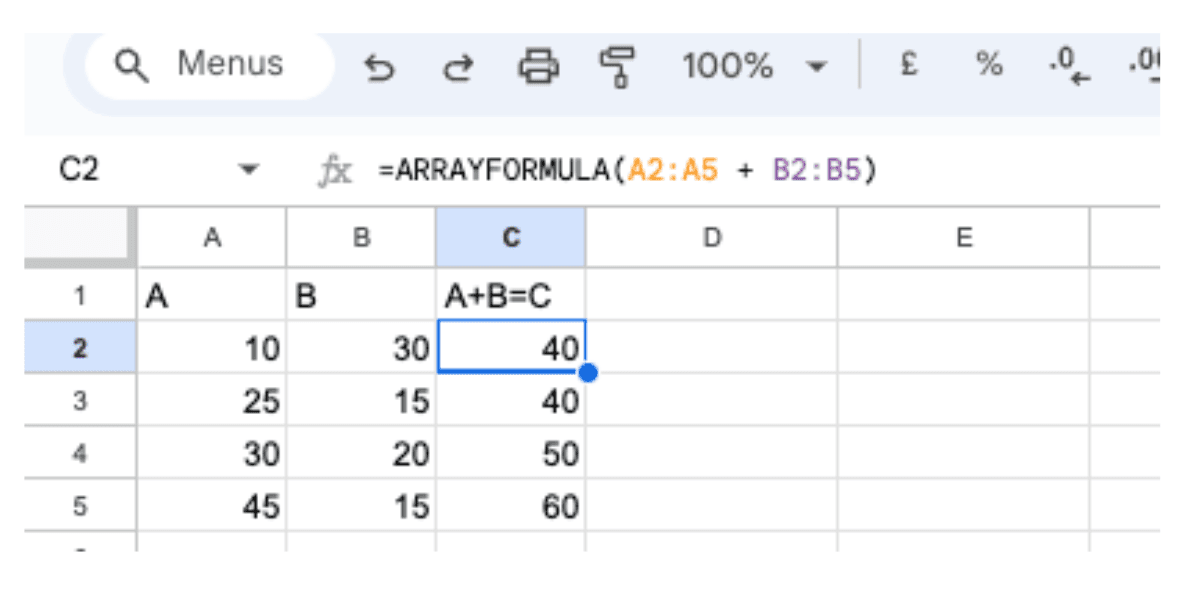
Use Superjoin AI Formula Generator to Generate Formulas
Tools like Superjoin's AI Formula Builder use advanced AI like GPT to generate formulas automatically based on simple prompts. This cutting-edge approach will likely become more popular as AI capabilities improve.
Resolving Common Errors and Circular Dependency
When working with formulas across large data sets, you may encounter errors like:
- #VALUE! - Caused by incorrect arguments passed to a function
- #REF! - Caused by referencing a cell that no longer exists
- #DIV/0! - Caused by attempting to divide by zero
- Circular dependency - Caused by formulas referencing themselves, either directly or indirectly
To resolve these:
- Double-check your formula syntax and arguments
- Ensure referenced cells/ranges are valid
- Use IFERROR to trap errors with alternate values
- For circular dependency, break the cell reference loop or use the ITERATION calculation option
With careful formula construction and thorough testing, you can avoid and quickly resolve errors.
Conclusion
Google Sheets offers several powerful methods for applying formulas across entire columns, from keyboard shortcuts to autofill to AI-powered tools. Mastering these techniques will dramatically boost your spreadsheet productivity when crunching numbers or manipulating data at scale.
FAQs
1. How can I automatically apply a formula to new rows in Google Sheets?
2. What if Google Sheets doesn’t suggest autofill for my formula?
3. How do I handle errors in formulas applied to entire columns?
Automatic Data Pulls
Visual Data Preview
Set Alerts
other related blogs

